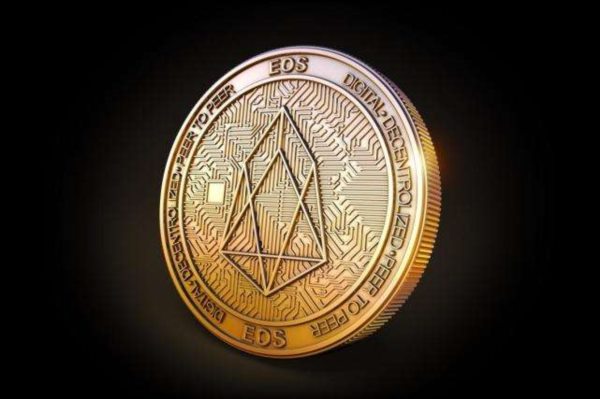时间:2024-03-22|浏览:682

用戶喜愛的交易所

已有账号登陆后会弹出下载
原创 吴说区块链 吴说Real 2024-03-22 09:00 山东
编译 | GaryMa 吴说区块链
在近期的 ETHTaipei 2024 大会期间,Vitalik 接受了多家媒体的采访的问答,过程涉及生活饮食、Dencun 升级以及以太坊相关路线(升级预期、中心化难题、标准化再质押等)、安全(抗量子)能力、ZK隐私安全)、去中心化社交、AI、行业关联等话题,吴说整理编译如下:
Q:作为一个游牧民,你最近经常给自己做速食吗?
A:黑巧克力会是主要的组成部分之一。
Q:当你四处旅行和生活时,哪个实验性社区活动给了你最大的启发?
A:这取决于你所说的实验性社区活动的具体含义,但广义而言,去年的 Zuzalu 可能是这个类别中最大的事情(Zuzalu 是 Vitalik 于 2023 年 3~5 月在黑山发起的流行- (上城快闪城市实验),还有一次越南的活动,是我参加的第一个整个现场都在户外的活动。它让我想起了杭州西湖的舞蹈。这也是我参加过的最安全的防疫活动会议,这很酷。
Q:最近你最感兴趣的工作是什么?不一定是以太坊/加密相关的。
A:今年跟以太坊相关的事情已经很少了,就算有关,也是在社区方面的。各个独立团体正在组建自己的项目,我在其中搜寻,尽我所能提供帮助。我很兴奋能够很快就去参观一些项目生态。最近,我一直在尝试一些最新的人工智能工具,本地运行模型,把它们用于各种任务。在这个领域加深理解并探索新的可能性非常重要。学习至关重要,我相信探索各种主题都是有价值的。所以,这些是主要的亮点。
Q:Dencun升级对以太坊生态系统有何贡献?
A:Dencun升级的目的是显着提高可扩展性,并降低交易费用,特别是对于L2和Rollups。它通过在每个区块内部创建一个独立的数据库部分(称为blob)来实现这一点。这些数据对EVM不可访问,这很重要,因为这意味着验证以太坊区块链的客户端不需要立即访问这些数据。然而,以太坊区块链保证了其可用性。这个特性对Rollups特别有利,以及任何依赖对于安全数据可用性的L2项目,确保节点可以在当前节点消失时同步,或者对错误答案提出挑战。
在过去的一周里,我们已经观察到第二层费用大幅下降,有时甚至降低了 50%。然而,需要注意的是,随着更多用户采用 blob,费用可能仍然会再次增加。尽管如此,这代表有了显着的可扩展性,改进了我们预计以太坊链支持的斑点数量将在未来几年持续增加。
Q:邓村升级后的表现有超预期吗?
A:我认为这取决于你对“超预期”的理解。从技术角度来看,升级进展顺利。网络参与率仅从99%下降到了95%,这比我们之前的任何硬分叉都要好。
有趣的是,目前使用量非常低。目标是每个块约 3 个 blob,但平均使用量承载每个块一个 blob。这意味着 blob 目前非常便宜。如果你想发布一个 blob,基本只需要支付以太坊的交易费用。高昂的以太坊交易费用可能是其中一个原因,但如果 blob 的价格接近于零,它们可以用于各种用途,比如备份加密的硬盘副本。保证数据库来说,有无限的用途。我相信使用量最终会增加,但目前对于目前的 Rollups 来说,价格非常便宜是有利的。我期待在未来几个月看到使用量增加。
问:您认为未来五年对社会变革性影响最大的是什么?
A:我认为未来五年对以太坊来说将是至关重要的,因为许多曾经是理论性或小规模的应用现在已经准备好认识现实世界。区块链技术的影响已经开始渗透到更广泛的世界中,但往往不被关注。例如,Reddit即将进行的IPO为活跃社区成员提供了与机构投资者并肩参与的机会,这得益于加密空间的思想。
就实际使用而言,稳定币已经产生了最大的影响,促进了视力、交易和转账。在未来五年里,以太坊的用户体验和费用结构将得到改善,L2和Base等项目的发展将开拓随着以太坊变得越来越用户友好,它有望在使稳定币可访问和去中心化方面达到领先地位。
除了金融领域,非金融应用也获得了增长,特别是在 Forecaster 和 Lens 等社交媒体替代方面。去中心化提供了独特的优势,例如人们都可以开发新的客户端或访问和写入相同的这个活跃的生态系统预计将进一步扩展。
基于以太坊的身份解决方案正在快速增长,其中包括人格证明协议和基于社交图的系统的进展。这些解决方案旨在解决在线平台中验证人类用户的挑战,引导中心化解决方案可能由此而来群体的风险。以太坊有潜力在开发这个问题的去中心化替代方面发挥主导作用。
总的来说,这些发展突显了以太坊演变的重要性,以及其在各个领域继续增长的潜力。
Q:您目前如何看待PoS方面的挑战,SSF(单槽形式)以及其他升级将如何解决这些问题?
A:我认为目前权益证明存在的主要挑战主要涉及各种中心化风险。一个重要的关注点是MEV(矿工可提取价值)方面,以及与权益证明和成为验证者本身的功能相关的风险。 MEV方面,我们正在酝酿增长的中心化和审查风险,中继器正在成为另一种集中化的参与者。执行票据(execution Tickets)和包含列表(inclusionlists)等技术旨在减轻这些风险,努力在块创建中保持去中心化和公平性,同时将特定的中心化功能分配给构建者。
另一个挑战是权益论证本身。根据最近的民意调查,不参与权益论证的关键是持有减去32个ETH和运行节点被认为过度困难。然而,针对这些问题已经制定了技术路线图。例如,垂直树已经取得了显着的进展,旨在将运行节点的存储要求从多个太字节减少到更可管理的水平,可能使节点能够在 RAM 中运行。此外,借助诸如 ZK-SNARKs 等技术,运行节点的计算需求将进一步减少,使更广泛的用户群体能够轻松运行节点。
拥有缺少 32 ETH 进行权益验证的问题更加复杂。首先,选择 32 ETH 是为了在需要大量 ETH 进行验证和避免过多验证者之间寻求平衡,这可能导致处理困难。权益证明的新方法包括放宽每个验证者参与每一轮投票的要求,从而实现插槽插槽终态和能够进行减去32 ETH的验证等好处。彩虹权益证明(Rainbow stake)和BLS签名是正在研究的提议之一。
Q:我们已经看到很多项目提出了“标准化区块链”解决方案,我们也看到了以太坊 L1 可以负责共享坊排序的想法。您如何看待这个更广泛的问题:L1 应该集中处理哪些功能,哪些功能应该进行各个 L2 处理?
答:谨暗示未来各个独立链的功能将减少,不同的由不同的部分管理,而共享排序变得迫切重要,正如我们的研究员 Justin Drake 所阐述的那样。
Currently, Ethereum L1 is responsible for shared security and settlement, ensuring that each L2 can interact without relying on a centralized set of participants or validators. Ethereum provides data availability for rollups, but not voliums, and the ordering of transactions is determined on a rollup-by-rollup basis.
Opinions differ on sharing ordering. Some argue for its merits, while others think it's overrated. They argue that the benefits of shared liquidity are somewhat limited and that MEV across L2s is not as important as one might think since it can be broken down into MEVs between different L2s.
Expanding Ethereum’s ability to directly support more data is critical. While ideally everything should be Rollup, practical constraints require exploring optimistic data constructs for off-chain data, with high-security functionality retained on-chain via Rollup.
Account abstraction introduces another challenge. Deciding where account state is stored and efficiently managing updates in multiple locations requires innovative solutions. One approach is to adopt a minimal keystore Rollup, where the state is stored in a neutral Rollup on top of Ethereum and is accessible to other L2s.
These ideas are still in their early stages and are under ongoing discussion within the Ethereum community. In practice, those critical functions that require L1 processing should remain there, while providing flexibility for different L2 processing of various functions is also very valuable.
Q: If you have a system that theoretically gives you some ZK level privacy, how do you, as a user, know that you're actually getting that level of privacy?
A: I think this is essentially a continuation of a problem that Ethereum already faces: ensuring the security of assets in smart contracts. If you trust assets to smart contracts rather than individuals, how do you ensure there are no backdoors allowing unauthorized access?
Current solutions include reading contracts on Etherscan, where people can publish the source code. While this is useful for savvy users, it is unrealistic for average users who are unable to review complex code themselves. Wallets have begun to address this issue by providing more warnings, such as alerts when interacting with less familiar applications.
One improvement I envision is a versioned DApp user interface based on IPFS hosting, with each update requiring a blockchain transaction for authorization. This eliminates the risk of unauthorized updates by compromising the server. The wallet can then display information about the website's recent updates and approval status.
We also need better mechanisms for aggregating the opinions of high-quality researchers and auditors. Wallets may play a key role in assisting users by aggregating this information. The same tools as for Ethereum should be applied to ZK technology, including releasing the source code and verifying its authenticity.
For example, tools like Etherscan can publish ZK source code and verify it on-chain. This approach ensures transparency and security for on-chain and off-chain ZK technologies such as Zoopass.
These efforts extend the same principles used by Ethereum contracts to the realm of ZK technology, ensuring user security and a transparent ecosystem.
Q: How do you think Ethereum solves the pressing problem of quantum threats, and what impact does this have on the broader cryptocurrency ecosystem?
A: The important point is that from a technical perspective, we have quantum-resistant algorithms for every vulnerability of quantum computers. Quantum computers break existing elliptic curve signatures, but we have various solutions based on hash functions, lattices, and homomorphic foundations. For example, lattice- and homomorphism-based solutions can address the impact of quantum attacks on elliptic curve cryptography and implicit addresses. Additionally, the latest technologies such as Starks have recently achieved breakthroughs in size reduction, providing quantum resistance due to their reliance on hash functions.
Fully homomorphic encryption is fortunately inherently quantum resistant, as quantum computers do not affect lattice-based cryptography. While this problem is solved in theory, some logistical challenges remain between theory and practice. However, emergency recovery mechanisms can protect most funds, although efforts are underway to ensure full quantum resistance for both users and the protocol.
To achieve this goal, several key steps are necessary. First, implementing account abstraction will allow users to choose quantum-resistant signature algorithms. Additionally, the Ethereum consensus layer needs to be quantum resistant, despite engineering challenges arising from the high efficiency of current signature schemes such as BLS. This highlights the importance of exploring alternatives, such as 8192-bit signatures per slot, to accommodate less efficient quantum-resistant algorithms, while researchers work on optimizing and benchmarking post-quantum alternatives.
Q: In your opinion, what are the benefits of combining AI with cryptocurrency? How will this reshape the industry? You discussed the role of AI in debugging code in February, could you provide more thoughts on how AI can be used in crypto and Ethereum?
A: AI and cryptocurrency are two very important technology trends in today’s era. There is a saying that AI tends to be centralized, while cryptocurrencies are striving to be decentralized. There is a certain complementary relationship between the two. But the question is, can we move from this concept to actual application examples, in a way that makes sense and is productive for both.
One of them is that AI is involved in predicting markets and other types of markets on Ethereum, essentially making the markets more micro and creating APIs that can function within them. Another is using AI as part of the wallet to help users understand the crypto environment they are interacting with. The third is to use cryptography, including ZK, SNARK, MPC, etc., to embed AI to create a safe, powerful and privacy-protecting AI model, making it a central participant in on-chain applications, whether it is DApps or Oracles, etc. oth









